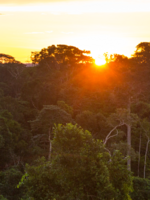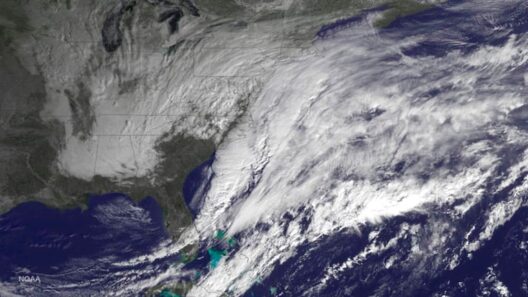In the lush, vibrant expanse of Southeast Asia, lies Indonesia—a nation renowned for its staggering biodiversity and its awe-inspiring forests, often referred to as the “Green Heart” of the region. With lush canopies that shelter countless species, Indonesia’s forests are not just a sanctuary for vibrant flora and fauna; they play a pivotal role in global climate regulation. But amidst the beauty lies a question: how are we safeguarding these vital ecosystems against the mounting threats of deforestation and climate change?
Indonesia’s forests cover approximately 125 million hectares, making them one of the largest tropical forest expanses in the world. These ecosystems are indispensable in sequestering carbon dioxide, thus mitigating the effects of climate change. The interaction between forests and atmospheric carbon forms a vital part of the Earth’s carbon cycle. Yet, with rampant logging, agricultural expansion, and industrialization, the deforestation rate in Indonesia has skyrocketed, posing a significant peril not just to the environment but to humanity as a whole.
Imagine a world without the rich diversity of Indonesia’s flora and fauna. Could we survive? This hypothetical scenario underscores a profound challenge: as we continue to exploit forest resources, we risk losing not just an ecological treasure but also the livelihoods of the indigenous communities who depend on these forests for sustenance and cultural identity.
Deforestation in Indonesia is driven by a multitude of factors. The expansion of palm oil plantations serves as a primary catalyst, as it produces a highly lucrative product sought after globally. The insatiable demand for palm oil has resulted in large-scale clearing of forests, leading to habitat destruction for myriad species, including the Sumatran orangutan and the critically endangered Javan rhinoceros. Moreover, illegal logging activities contribute to the degradation of forest habitats, creating an alarming spiral that exacerbates climate vulnerability.
Furthermore, forest fires, often deliberately set for land clearing, release massive amounts of carbon emissions into the atmosphere, aggravating the climate crisis. The recurring haze from these fires not only affects air quality but also poses severe health risks to millions of people in neighboring countries. The interconnectedness of these outcomes reveals that forest conservation is not solely an environmental issue; it is also a public health and human rights dilemma.
This dire situation calls for urgent, innovative approaches to preserve Indonesia’s forests. Community-based forest management presents a viable solution, empowering local populations to play an active role in conservation efforts. By integrating local knowledge with modern conservation techniques, communities can maintain their livelihoods while fostering a sustainable relationship with their environment. This partnership can serve to protect forest ecosystems from exploitative practices while restoring biodiversity.
Moreover, strengthening legal frameworks to combat illegal logging is crucial. Indonesia has made strides with initiatives aimed at reducing deforestation rates, but effective enforcement remains a significant hurdle. Collaborating with NGOs, local governments, and international stakeholders can bolster these efforts, ensuring that the forests are protected and managed sustainably. Transparency in supply chains, especially in industries heavily reliant on forest resources, can further diminish opportunities for illegal practices.
In addition to these community-based initiatives, reforestation plays an indisputable role in combating the adverse effects of climate change. Planting native tree species not only restores degraded land but also enhances carbon sequestration capabilities. Programs that engage volunteers and local businesses in reforestation efforts create a sense of ownership among participants and foster awareness about the importance of forest conservation.
Indonesia’s rich cultural heritage is inextricably linked with its forests. Indigenous communities have thrived in harmony with nature for centuries, possessing invaluable knowledge about sustainable practices. By recognizing and upholding their rights, communities can be powerful allies in the quest to combat climate change. Their traditional ecological wisdom has the potential to inform modern conservation strategies, resulting in holistic practices that respect both people and the planet.
Moreover, supporting eco-tourism initiatives can direct economic benefits towards forest conservation efforts. Visitors drawn to Indonesia’s rich biodiversity inherently support the preservation of these ecosystems. These initiatives provide not only an alternative source of income for local communities but also educate tourists about the importance of forest conservation. Sustainable tourism allows visitors to appreciate the pristine landscapes while fostering a connection to the environmental advocacy necessary for long-term preservation.
As we embrace the challenge of protecting Indonesia’s forests, collaboration at all levels is paramount. Local communities, governments, and international organizations must unite under a common vision—a vision that honors the sanctity of these ecosystems. It is incumbent upon all of us to advocate for policies that propel sustainable practices, ensuring that the legacy of Indonesia’s Green Heart endures not merely as an abstract concept but as a concrete reality for generations to come.
In conclusion, unless we act decisively, our connection with nature will dwindle, leading to irreparable damage not only to Indonesia’s forests but also to the global environment. The stakes are high. Are we prepared to answer the call for action? The challenge is laid before us; it is our responsibility to rise to it. Through innovative conservation strategies, community resilience, and heightened awareness, we can secure a sustainable future while nurturing the ecological riches that Indonesia offers. Only then can we truly celebrate the Green Heart of Indonesia as a beacon of hope against climate change.






